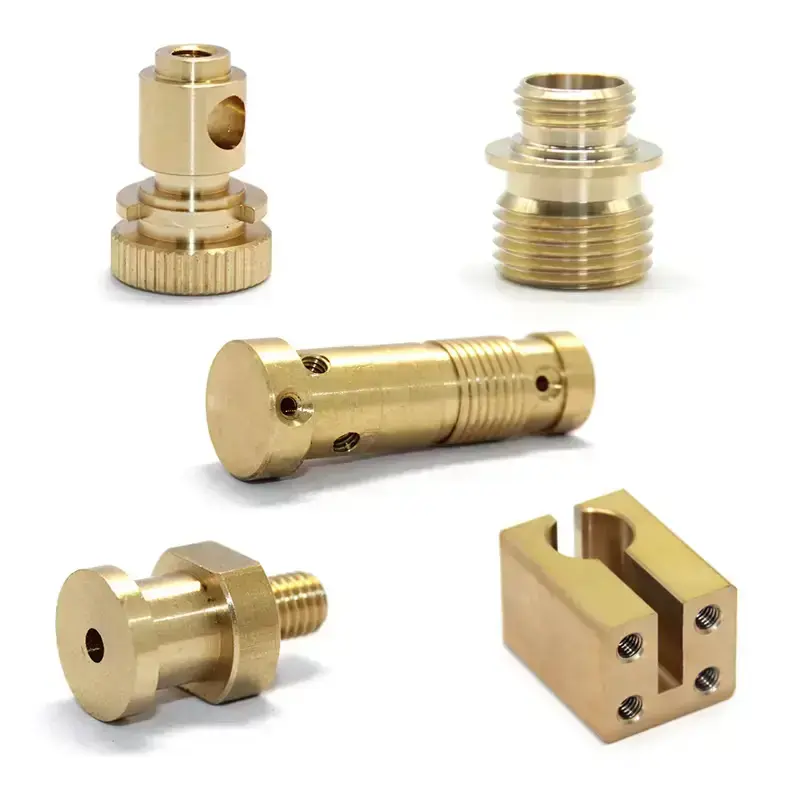Testing and Certification Processes for Copper Parts
Copper, a treasure of the metals, is indispensable across a myriad of industries, from electronics and plumbing to manufacturing and architecture. Its exceptional properties, such as excellent electrical conductivity, malleability, and resistance to corrosion, make it a preferred material in countless applications. However, as with any material, the quality of copper parts must be meticulously controlled to ensure they meet the highest standards. Testing and certification processes are pivotal in this endeavor, ensuring that each copper part fulfills its intended function and durability.
Understanding Copper Parts: Uses and Characteristics
Copper's versatility and durability have cemented its status across various sectors. In electronics, copper is integral in wiring and circuit boards, crucial for signal transmission. In plumbing, copper's resistance to corrosion makes it ideal for pipes and taps. Meanwhile, in manufacturing, copper components enhance machinery performance. Beyond these, copper's use in architecture and art showcases its aesthetic appeal and structural integrity. Copper's characteristics, such as its conductivity, malleability, and resistance to wear, are vital for its functionality. However, these properties can be influenced by factors like impurities or manufacturing defects, underscoring the necessity for rigorous testing and certification.

Critical Testing Methods for Copper Parts
Ensuring the quality of copper parts begins with robust testing methods. Electrical conductivity tests are foundational, verifying if copper meets the required standards for conductive applications. Tensile strength tests assess copper's durability under stress, ensuring it can withstand the forces it will encounter. Anodizing tests evaluate the surface durability and protect against corrosion, while magnetic field tests check for purity. Each test provides critical insights, guiding manufacturers on part suitability. For instance, a conductivity test might reveal if a batch of copper is suitable for high-current applications, while a tensile test could highlight potential weaknesses in a manufacturing batch.
Certification Processes for Copper Parts
Certification processes for copper parts are governed by standards such as ISO and UL, ensuring uniformity and reliability. These processes typically involve an application, rigorous testing, evaluation by certified bodies, and approval. Compliance with these standards not only ensures quality but also facilitates compliance with regulations, enhancing a companys credibility. For example, a company manufacturing copper plumbing pipes might undergo these tests to meet international standards, ensuring their products are recognized globally.
Challenges in Testing and Certification
Despite best efforts, challenges persist. Inconsistent test results can arise from improper testing methods or equipment, necessitating standardized protocols. Inadequate equipment might lead to inaccurate readings, highlighting the importance of regular calibration. Additionally, the sheer volume of copper parts produced can strain resources and personnel, demanding efficient processes. Addressing these challenges requires investment in quality control and technological advancements, ensuring the reliability of testing and certification processes.
Successful Implementation of Testing and Certification
Real-world examples illustrate the impact of rigorous testing and certification. For instance, a telecommunications company improved its copper wiring by implementing standardized testing protocols, enhancing both performance and reliability. Another manufacturer, after failing initial tests, realized the necessity of regular equipment calibration, leading to a noticeable improvement in product quality. These case studies underscore the transformative effect of robust testing and certification, providing valuable lessons for manufacturers.
Future Trends in Testing and Certification
Emerging technologies are poised to revolutionize testing and certification. Digital testing, leveraging IoT sensors, offers real-time monitoring, enhancing efficiency. AI-driven quality control can detect anomalies with precision, reducing human error. Additionally, advancements in material science may offer new testing methods, ensuring even greater accuracy and reliability. These trends bode well for a future where testing and certification processes are more efficient and effective.
The Value of Robust Testing and Certification
In conclusion, testing and certification are cornerstones in ensuring the quality and reliability of copper parts. From understanding their uses and characteristics to employing rigorous testing methods and certification processes, each step contributes to delivering high-quality products. Navigating challenges through standardized protocols and technological advancements, coupled with real-world examples and future trends, underscores the importance of these processes. As we move forward, embracing digital innovation promises to further enhance the effectiveness of testing and certification, ensuring copper parts meet the highest standards.
